Building a Japanese Studies Researcher Network through a Summer Institute
R. Keller Kimbrough (Associate Professor, University of Colorado, Boulder)
Phan Hai Linh (Professor and Head of Department of Japanese Studies, University of Social Sciences and Humanities, Vietnam National University, Hanoi)
Keiichi Sato (Research Fellow, Japan Society for the Promotion of Science, Tohoku University)
Indah S. Pratidina (PhD student, Graduate School of Social Sciences, Hitotsubashi University)
Summer Institute 2015 on Japanese Studies program was held from July 25-31, 2015, gathering Japanese Studies researchers from six Southeast Asian countries* and the United States, as well as humanities and social sciences researchers in Japan. The purpose of this program is to create a cross-regional researcher network by bringing together scholars from the three regions and to provide opportunities for young researchers to improve their research methods and capabilities.
While staying at Doshisha University's retreat center, the 17 lecturers and 32 young researchers participated in lectures and panel discussions and visited related institutions and Hieizan Enryaku-ji Temple. The program received many positive comments from the participants that it served as a great opportunity to broaden their perspectives as researchers through exchanging opinions among researchers of differing ages, backgrounds, and areas of specialty.
Following are some of such impressions on the program by our participants from the perspectives of our lecturers and young researchers.
* Indonesia, Singapore, Thailand, the Philippines, Vietnam, and Malaysia
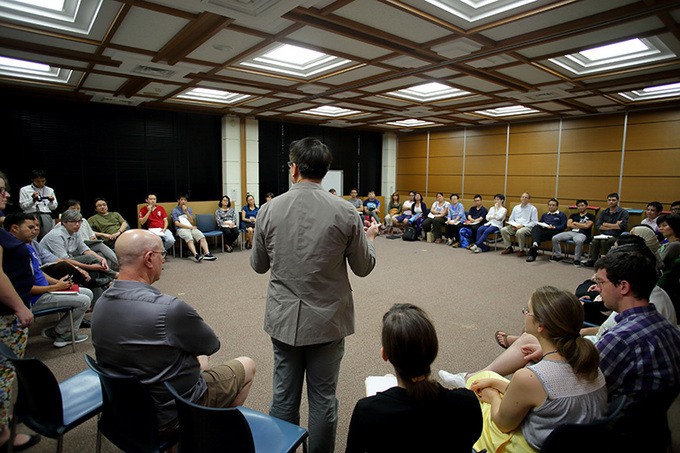
(Photo: Akio Takahashi)
R. Keller Kimbrough
The Japan Foundation Summer Institute was a wonderful experience. For six days we were able to enjoy a series of outstanding lectures and discussions in the lovely environment of the Dōshisha Biwako Retreat Center. The food was great, the conversations were long and enriching, and we were able to meet and get to know colleagues from a variety of countries that some of us might never visit on our own. My favorite excursion was the trip to Enryakuji on Mount Hiei. The temple was beautiful, and the chance to learn about monastic life on the mountain was rare and exciting. I used the opportunity to take photos of the various temple buildings for one of my classes at the University of Colorado, where I often have to lecture on the history of Buddhism in Japan. Even the bus and train rides to our various destinations, including Mount Hiei, the Kansai-kan of the National Diet Library, and the Kyoto National Museum were valuable networking experiences, because they allowed us to spend time talking with our colleagues about our lives and our research, and to learn about the state of Japanese Studies around the world. Since returning to the United States I have exchanged email messages with some of the Institute participants, and I hope to maintain contact with them in the future. The Japan Foundation did an excellent job of organizing and running the Institute, and if I can, I will gladly return for a second summer.
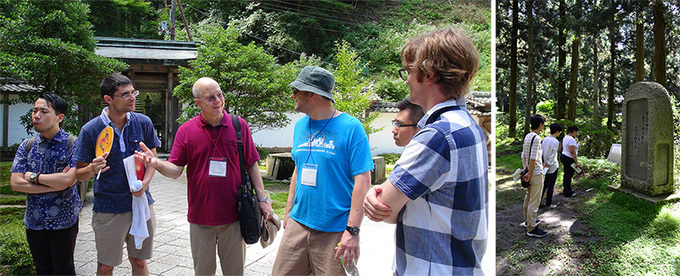
Left and right: Study Tour of Hieizan Enryaku-ji Temple
Phan Hai Linh
First, I would like to highly evaluate the concept of the Summer Institute 2015 on Japanese Studies organized by the Japan Foundation. The Japanese Studies research attracts attention not only in the United States and Southeast Asia, but also within Japan. In contrast with the Japanese Studies research that was popular in the second half of the 20th century, which pursued the "Japan model" and the "secrets of success," topics such as "the state of Japan" and "Japanese Studies for Japan" have come to be emphasized. Against this backdrop, I thought the course provided a valuable opportunity for senior scholars and younger researchers to share their areas of interest with each other, regardless of their different fields and different regions of Japanese research. As I participated in the course, I was stimulated by the high-level lectures given by senior researchers on subjects ranging from Buddhist history and traditional dramatic theater to international affairs and pop culture, as well as the keen observations and comments offered by the young researchers. In addition, through Zen meditation, public baths, and campfires, at some point we transcended our different research fields, ages, and regions, and began to build networks. The final review session and the sight of everyone taking photos at the farewell party and exchanging contact information left a deep impression on me. The course was held for just a week, but a network of Japanese scholars from the U.S., Japan, and Southeast Asia was launched in the due course.

Left: During the lecture (Photo: Akio Takahashi)
Right: A scene from the campfire where participants created stronger bonds(Photo: Akio Takahashi)
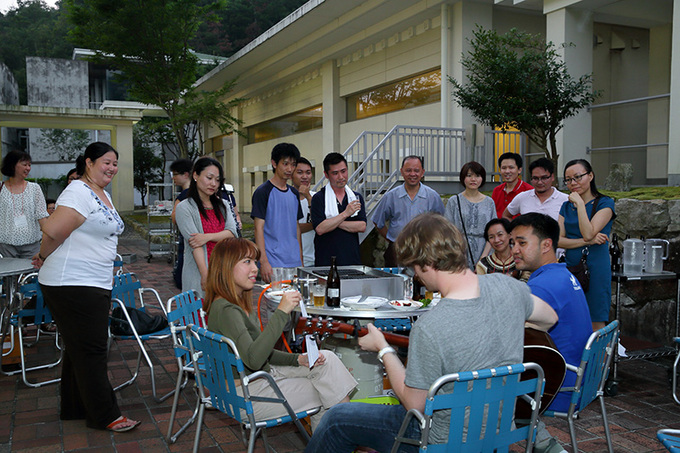
Participants forging friendships at a barbecue (Photo: Akio Takahashi)
Keiichi Sato
When I was little, I loved to look at pictorial books. Inside were insects and other animals, coins, ships, national flags, etc. I would take out various illustrated books and gaze all day at the diverse patterns that leapt up to my eyes from the pages.
This joy disappeared when I became a researcher. The basic rule of the game is to see how quickly you can produce something just a little bit new, with a slightly different approach in a single field of expertise.
The Summer Institute allowed me to travel through the pictorial book world once again. I was excited with the brutal kojoruri stories from the Middle Ages (Dr. Kimbrough), the elephants given as gifts from Vietnam in the Edo period (Dr. Phan) and other stories about Japan that I would not have ordinarily come into contact with. I was also surprised by how all of us, despite our different nationalities and academic fields, could have lively discussions on subjects that were not in our fields of expertise. At the same time, I thought that knowing a broad range of things about a certain region was most practical for international exchange.
The phrases, "international exchange," "interdisciplinary," and "liberal arts" often end up amounting to nothing more than buzzwords. This is because no one knows how to make new encounters.
So-called "area studies" is a field of scholarship with a long history. However, is it not something old with a new research approach? My experience in this course helped me feel the potential for that in my research.

Left and right: Discussions among participants (Photo: Akio Takahashi)
Indah S. Pratidina
It didn't take me long to decide applying for the Japan Foundation's Summer Institute. I was personally intrigued with the chance of spending a week with fellow researchers who are not only from Japan, but Southeast Asia and the U.S. as well. In conferences, we always tried to manage meeting, talking and exchanging cards between our own and others' presentations in a limited time. There are simply too many to accomplish in those usually maximum three days events. So it was certainly appealing to have a longer time frame to establish a potential network.
I have to admit that at the first glance on the program and list of participants, I was feeling uneasy to see the heavy focus on Japanese Studies. Although currently pursuing a PhD in Japan, I do not necessarily attach my research in the mentioned field. However, throughout the program I was glad to be again reminded that our field of study should not limit our source of information, that knowledge and insights can indeed knocking from the least unexpected door.
Although I would like to suggest more assigned time to introduce our own researches, I felt privileged to sit in lectures from some of the big names in the field. The Institute allowed me the chance to exchange experiences with fellow researchers, as well as the rare opportunities to converse with the wonderful professors in an open and welcoming atmosphere. Looking forward in maintaining the already started network even after the Institute.
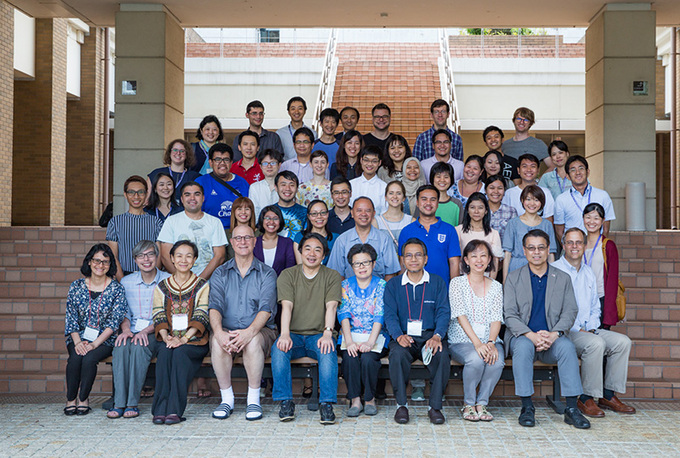
Participants posing for a commemorative photograph (Photo: Akio Takahashi)
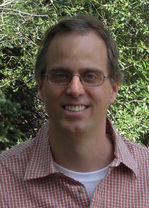 R. Keller Kimbrough
R. Keller Kimbrough
R. Keller Kimbrough is an associate professor of Japanese Literature at the University of Colorado, Boulder. He is a native of Colorado and Tennessee. He earned his BA in English Literature at Colorado College (1990), and his MA and PhD degrees in Japanese Literature from Columbia University (1994) and Yale (1999). Some of his major publications include: Wondrous Brutal Fictions: Eight Buddhist Tales from the Early Japanese Puppet Theater (New York: Columbia University Press, 2013), and Preachers, Poets, Women, and the Way: Izumi Shikibu and the Buddhist Literature of Medieval Japan (Ann Arbor: University of Michigan Center for Japanese Studies, 2008).
![]()
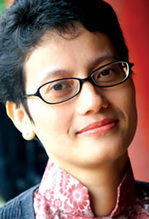 Phan Hai Linh
Phan Hai Linh
Phan Hai Linh was born in Haiphong, Vietnam. She studied Japanese History at Lomonosov Moscow State University in Russia and at Showa Women's University in Japan, earned her master's degree from the Vietnam National University, Hanoi in 2000, and her doctorate in Japanese Studies in 2006 from the same university. In 2007, she was awarded Best Doctoral Thesis from the Republic of Vietnam Historical Society. She has been working at the Eastern Studies Department of Vietnam National University, Hanoi since 1996, and has been Department Head since 2005. From 2000 to 2001, she was a visiting researcher at the history department of Osaka University, and in August 2010 she was a visiting lecturer at the Faculty of Japanese Studies of the National University of Singapore. In 2014, she became an associate professor at the Eastern Studies Department of Vietnam National University, Hanoi. She is the author of history theses on Japan's medieval manors and Vietnam-Japan exchange. Her major published works include Nihon Shouenshi [History of Japan's Medieval Manors] (2003, Sekai Shuppan); Nihonshi [History of Japan] (2007, Sekai Shuppan); Nihon Kenkyu Ronbunshu: Bunka to Shakai [Research Papers on Japan: Culture and Society] (as editor, 2010, Sekai Shuppan); Nihon Kenkyu Ronbunshu: Houseishi [Research Papers on Japan: History of Law] (as editor, 2011, Sekai Shuppan); and Nihon Kenkyu Ronbunshu: Nihon to Ajia [Research Papers on Japan: Japan and Asia] (as editor, 2012, Sekai Shuppan).
![]()
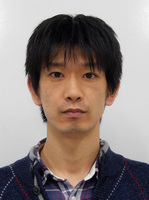 Keiichi Sato
Keiichi Sato
A Tokyo-born researcher, Keiichi Sato has completed a doctoral course at the Graduate School of Social Sciences, Hitotsubashi University. He currently works at Tohoku University as a research fellow (PD) from the Japan Society for the Promotion of Science. He has studied the political processes of Japan's climate change policies and citizen's movements regarding nuclear power and energy issues. An upcoming publication is his article, Datsu Genpatsu wo Mezasu Shimin Katsudou--3.11 Shakai Undou no Shakaigaku [Citizen's Movements Aimed at Eliminating Nuclear Power--The Sociology of 3.11 Social Movements] (Co-editor with Takashi Machimura, published by Shin-yo-sha).
![]()
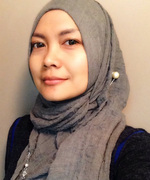 Indah S. Pratidina
Indah S. Pratidina
Indah S. Pratidina is from Jakarta, Indonesia. She gained her bachelor's degree from the Department of Communication, the Faculty of Social and Political Science, University of Indonesia, and continued her master's degree course and currently is a PhD student at Hitotsubashi University, Tokyo. Having worked at general publisher Gramedia Pustaka Utama and Mission of Japan to ASEAN, her interests are in Media Studies, particularly literature and the Association of Southeast Asian Nations (ASEAN). Her current research is on the use of social media by state and non-state actors, media, and individuals in relation to the ASEAN Community building and the power relationship between them.
Keywords
- Philosophy/Religion
- Japanese Studies
- Japan
- Indonesia
- Singapore
- Thailand
- Philippines
- Viet Nam
- Malaysia
- United States
- University of Colorado
- Vietnam National University
- Hanoi
- Japan Society for the Promotion of Science
- Hitotsubashi University
- Doshisha University
- Hieizan Enryaku-ji Temple
- Dōshisha Biwako Retreat Center
- Buddhism
- Kansai-kan of the National Diet Library
- Kyoto National Museum
- kojoruri
Back Issues
- 2024.11. 1 Placed together, we …
- 2024.5.24 The 50th Japan Found…
- 2024.5.24 The 50th Japan Found…
- 2024.2.19 Movie Theaters aroun…
- 2024.2.19 Movie Theaters aroun…
- 2023.4.24 The 49th Japan Found…
- 2022.10.24 Inner Diversity <2> …
- 2022.10. 5 Living Together with…
- 2022.6.13 The 48th Japan Found…
- 2022.6. 3 The 48th Japan Found…

